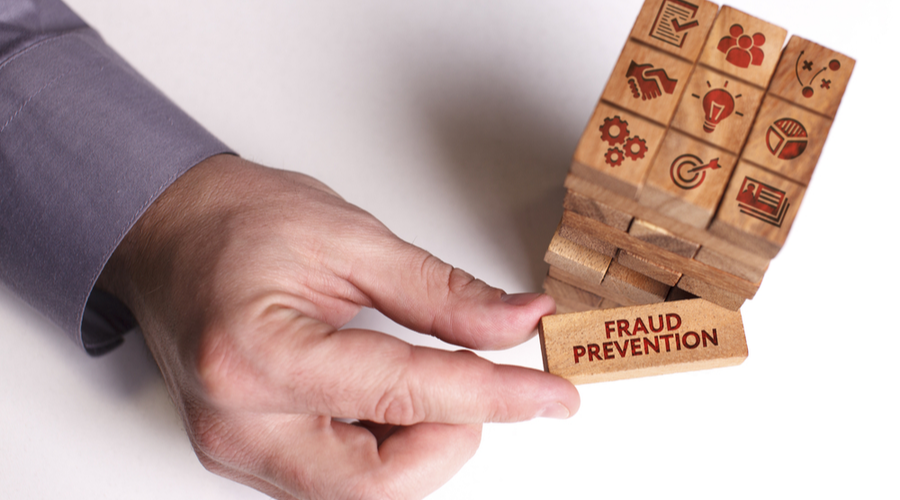Shrinkage and theft are unfortunately a part of life for brick-and-mortar retailers. According to the 2020 National Retail Security Survey, retail shrink soared to nearly $62 billion in 2019.
While you may know the signs of a sneaky shoplifter, thieves are frequently turning to more sophisticated forms of retail fraud to commit their crimes.
Be aware of these five common retail fraud tactics practiced by thieves, and know the strategies you can use to prevent them.
Price tag switching
Instead of simply shoplifting an item, sometimes fraudsters will switch the price tags.
How it works: the thief takes the tag of an inexpensive product and places it on an expensive one. They take it to the register and when the item is scanned, it rings up at the cheaper price.
Sometimes, this can be as simple as peeling off the sticker of one item and placing it on another, but thieves have also been known to bring in their own price-tagging guns or create their own UPC labels to make the switch.
Preventing price tag switching
If you’re diligent, you can catch price-tag switchers in the act. One tactic to prevent it is using price stickers that are highly adhesive and have extra security cuts. This means thieves will not be able to remove them without tearing up the whole sticker.
Educate employees on signs of price tag switching. Bent or torn tags are a signal that they may have been tampered with.
Employees should also be well-educated on the products your pharmacy carries, so if a product rings up at a low price, it will send up a red flag.
Loyalty fraud
If you have a patient loyalty program, it could be an easy target for fraud. Every year, around $160 billion in loyalty rewards go unredeemed according to PYMTS.
Because many folks aren’t actively paying attention to the balance in their loyalty accounts, it’s easy for thieves to use the accounts without being caught.
One of the most common strategies is for thieves to get ahold of email addresses or phone numbers and use the loyalty points and rewards from those accounts. They may also open new accounts using stolen information.
Preventing loyalty fraud
If you’re paying close attention to your patient loyalty accounts, there are some ways you can catch fraud while it’s happening. Common signs are large numbers of points being redeemed in multiple accounts, or large numbers of points being transferred between accounts.
But in order to really protect your patient loyalty accounts from fraudsters, you may have to enlist some outside help. There are cybersecurity programs that can monitor your loyalty program and flag any suspicious digital behaviors.
Return fraud
You might think it’s good customer service to have a generous return policy, but you could actually be giving thieves another opportunity to take advantage of you.
Return fraud can take a few forms. One is that people return products that have already been used, meaning you can’t restock them.
Another tactic is returning products that were originally stolen, either from you or from some other retailer. Thieves will sometimes go through the effort to create a fake receipt to make the return more convincing.
Preventing return fraud
One of the best ways to prevent return fraud is by having a rock-solid return policy.
Make sure your policy is clearly presented so thieves can’t play dumb — print it at the end of your receipts, put it on your website, and display it at the cash register.
Here are a few good policies to have in place:
- Returns must include the original receipt
- Tags must be on the merchandise
- Returns must be made within a certain window
- The person making the return must present their ID
Credit card fraud
One classic form of retail fraud is credit card fraud. Frequently, this means that thieves try to make a purchase from a card they’ve stolen, prompting the real owner to report the purchase as fraudulent — and leaving you on the hook.
Thieves may also try and use a counterfeit credit card, which will ring up in your system but isn’t attached to any sort of account.
Another form of credit card fraud is fraudulent chargebacks. The thief will make a legitimate purchase and then file a chargeback with their credit card company in order to get their money back.
Preventing credit card fraud
Staff should be on the lookout for credit card fraud while they are working the register. If a receipt signature doesn’t match the signature on the back of the card, that is a sign the card could be stolen.
Train staff to check the last four digits on the receipt against the last four numbers on the card — a mismatch could mean a counterfeit card.
Another smart move would be to update your point of sale and payment processor. Modern hardware and software will be able to catch credit card fraud for you.
Internal fraud
Though you probably hate to think of it, there’s a chance your own employees are stealing from you. They have increased access to pharmacy systems, making it easier to steal.
Common forms of employee fraud include skimming from the register, giving unauthorized discounts or free merchandise to their family and friends, and issuing fake refunds.
Gift card fraud is another common scheme perpetrated by employees. They add funds to gift cards without ever paying for them.
Sometimes, employees use the same tactics as external predators and steal by switching price tags or skimming from customer loyalty accounts.
Preventing internal fraud
Before you make a hire, run a comprehensive reference and background check. If an applicant has a history of stealing, they probably aren’t a good fit for your pharmacy.
Aside from a thorough hiring process, one of the best ways to prevent employee fraud is to keep them happy. If your staff members are well-paid and feel appreciated, they will be less likely to steal from you.
A Member-Owned Company Serving Independent Pharmacies
PBA Health is dedicated to helping independent pharmacies reach their full potential on the buy-side of their business. Founded and owned by pharmacists, PBA Health serves independent pharmacies with group purchasing services, wholesaler contract negotiations, proprietary purchasing tools, and more.
An HDA member, PBA Health operates its own NABP-accredited secondary wholesaler with more than 6,000 SKUs, including brands, generics, narcotics CII-CV, cold-storage products, and over-the-counter (OTC) products — offering the lowest prices in the secondary market.












